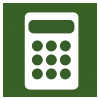Sawfly
by Johan J Ingles-Le Nobel
Last updated August 31, 2017
If you have ever seen leaves on bushes and trees that become skeletonised or transparent with just their veins remaining, this tends to be the work of Sawfly larvae, which eat through the tissue of the leaf until it has almost completely disappeared. At least 400 different species of sawfly have been recorded on plants in Britain. Two or three adult generations may develop during the growing season with the third generation over wintering as pupae that emerge in the spring. These grubs are not popular with gardeners.
This is an adult "Green Sawfly", Rhogogaster viridis, a common species found on woodland rides, hedgerows and scrub, often on flowers, during the summer months throughout the UK. I found this little guy on the nettles surrounding the allotments in Holmbury St.Mary, England - of all the places I visit and potter this has 3x as many insect types as the rest put together because it is both near water and is surrounded by a bunch of nettles.
Sawflies are related to wasps and bees. These primitive wasps are not flies (Diptera), because they have two pairs of wings; flies only have one. Their name is derived from the saw-like ovipositor the adult female uses to lay eggs. Adult Sawflies like this are relatively are inconspicuous wasp-like insects that cannot sting and cannot eat! In fact they are one of the few insects in the wasp family that feed on plants; The adult resembles a fly or a wasp but without the constricted waist. The larval or immature stage of Sawflies are plant feeders and look like hairless caterpillars and can often be seen around the edges of the leaves and most curl up into an S-shape when disturbed. Larvae will also bore into developing fruits causing them to become scarred and exude sticky liquid.
Related Articles









